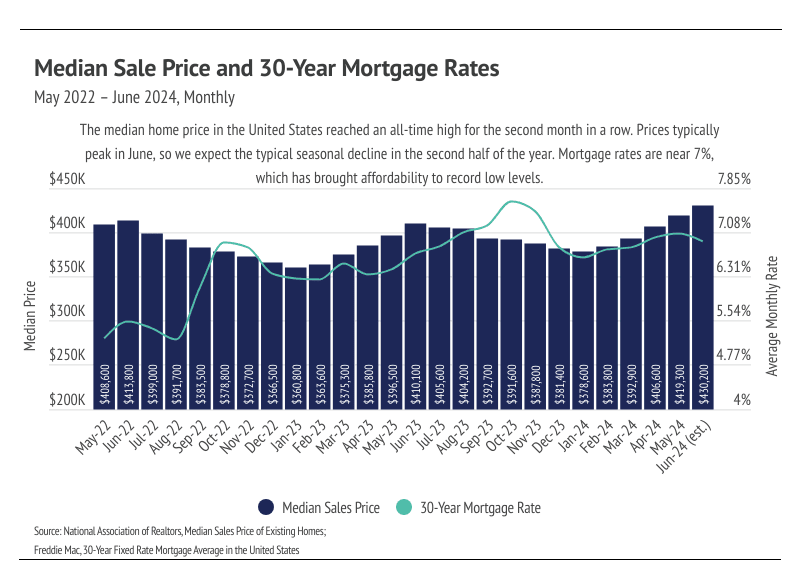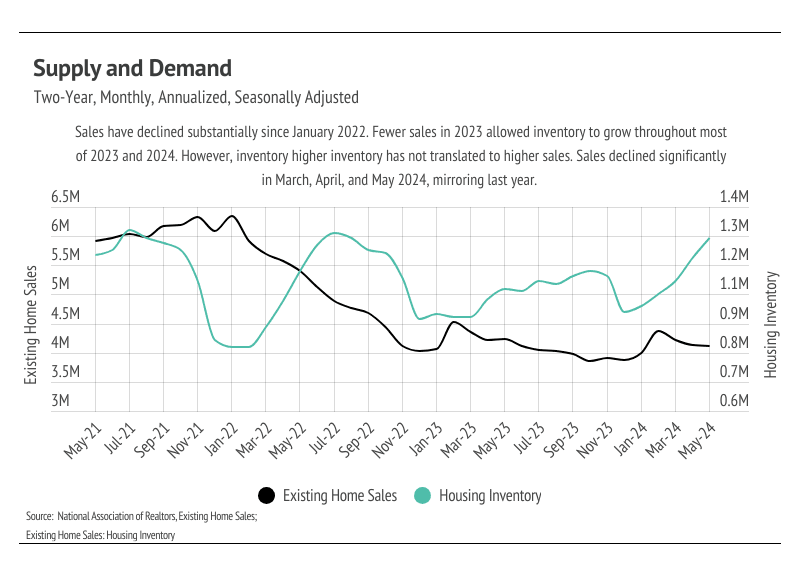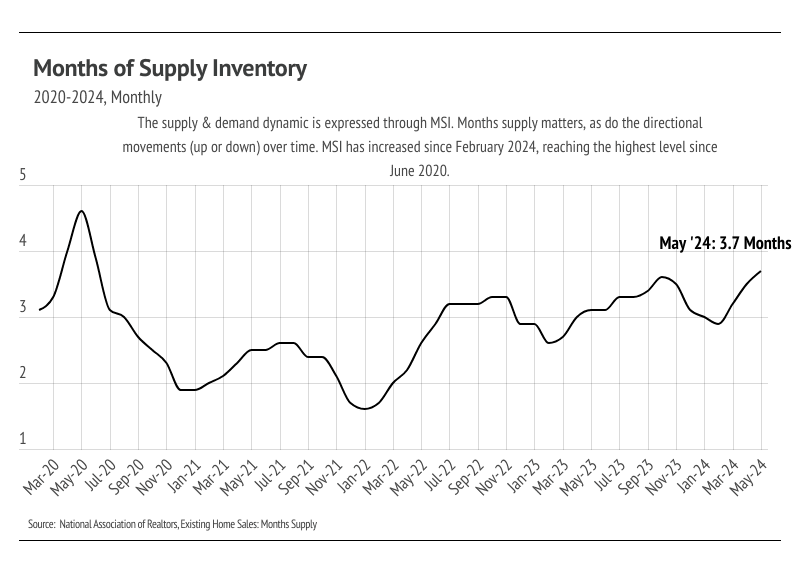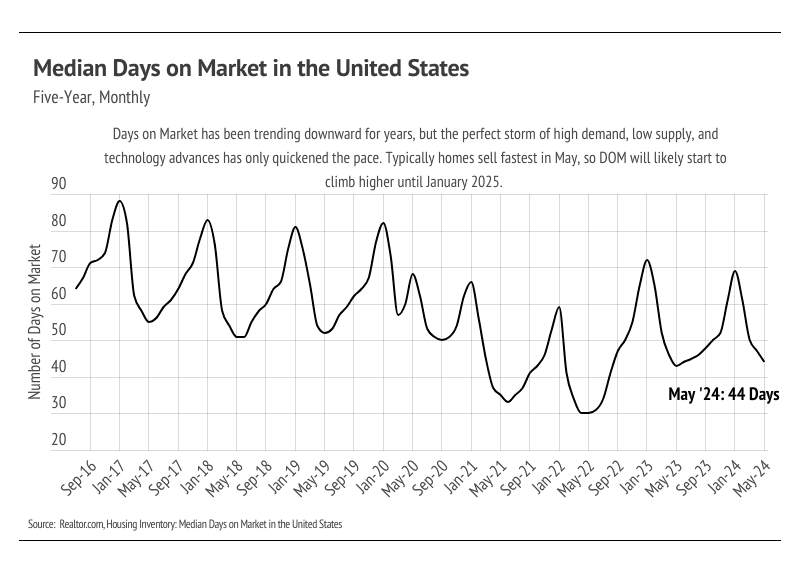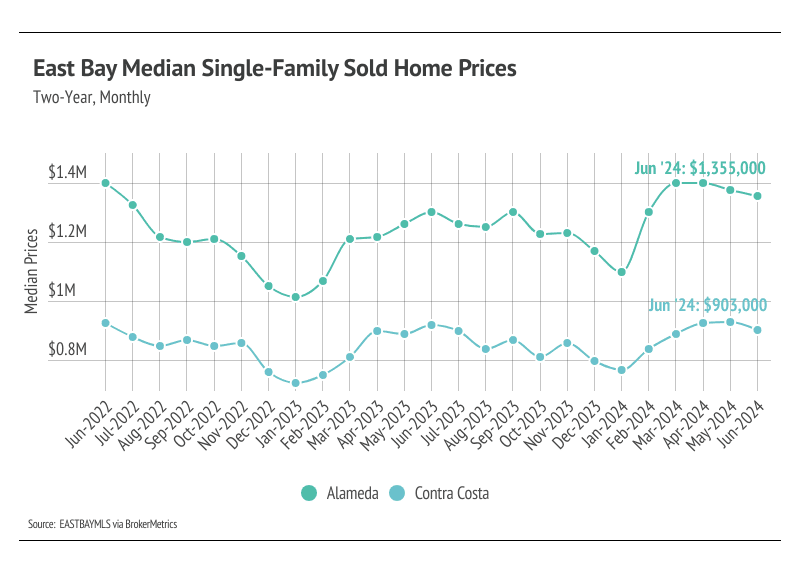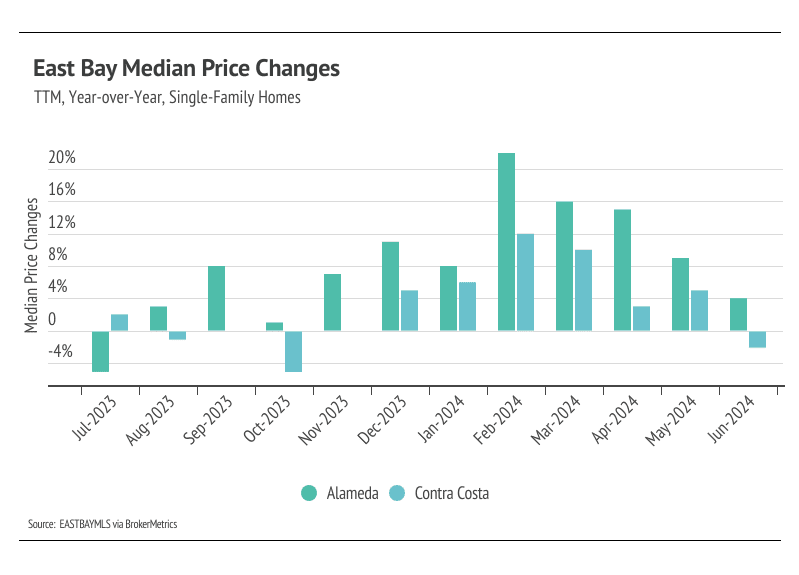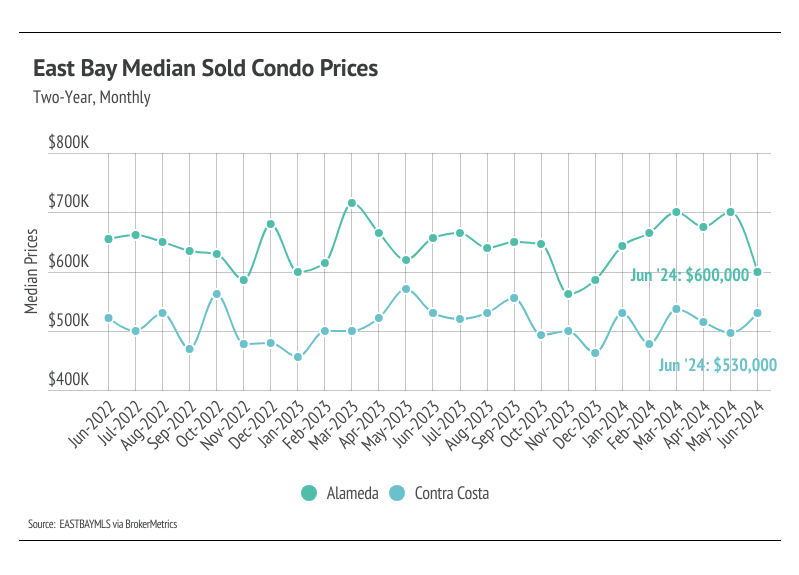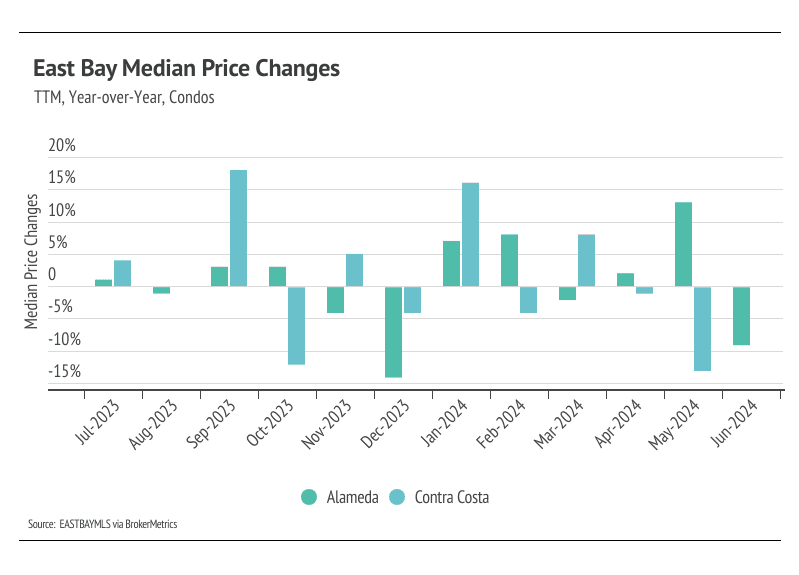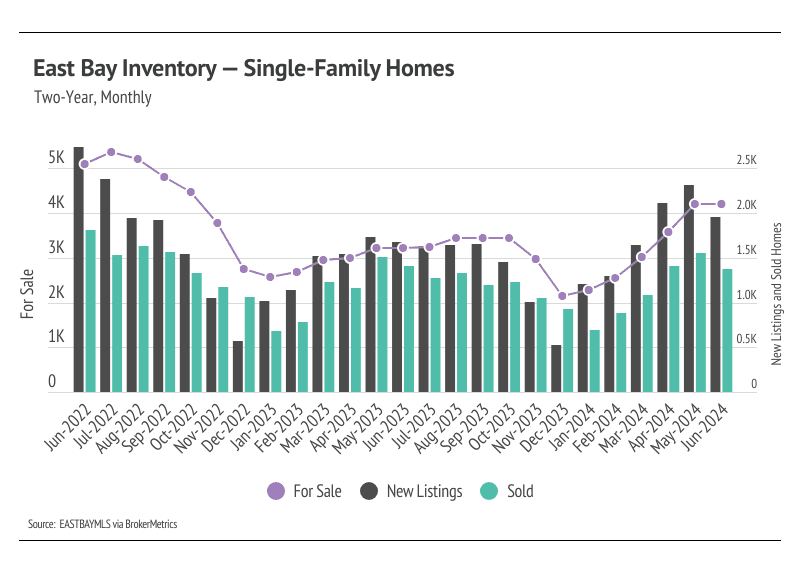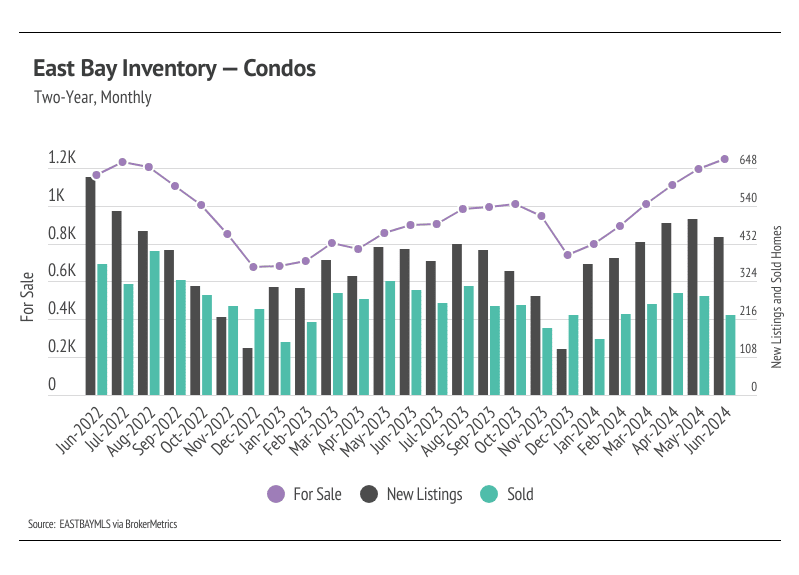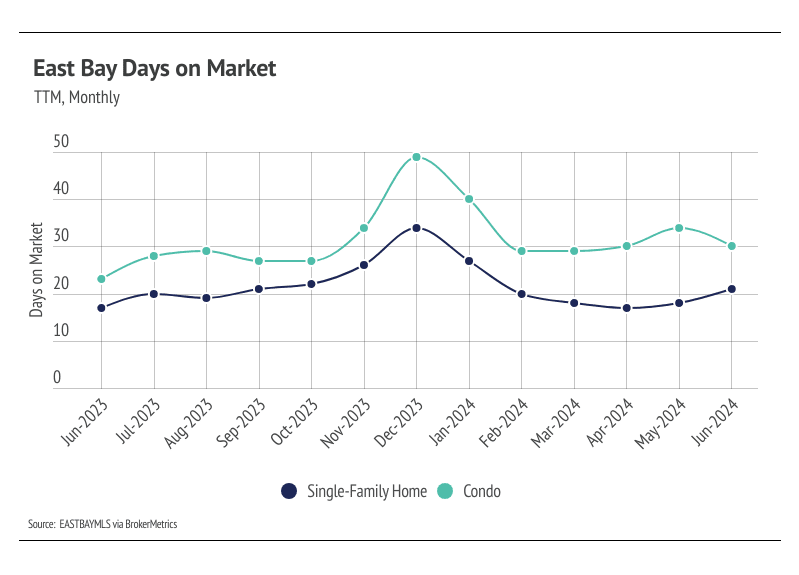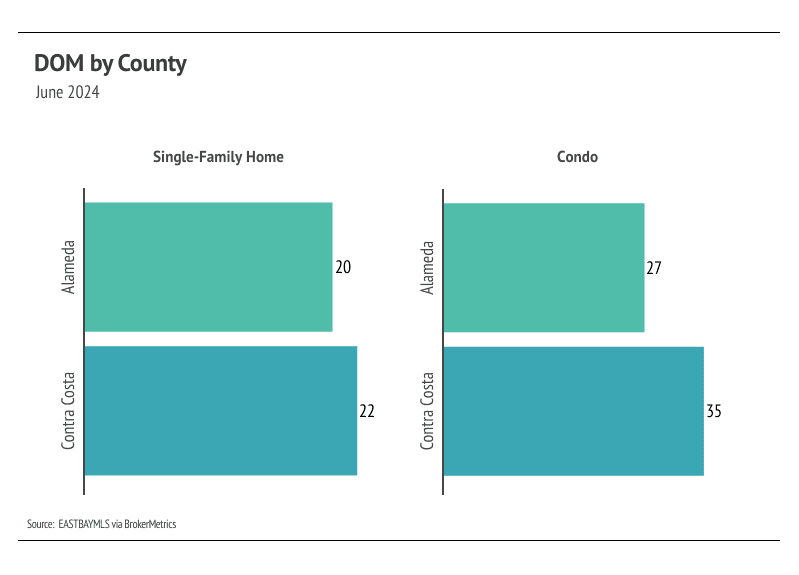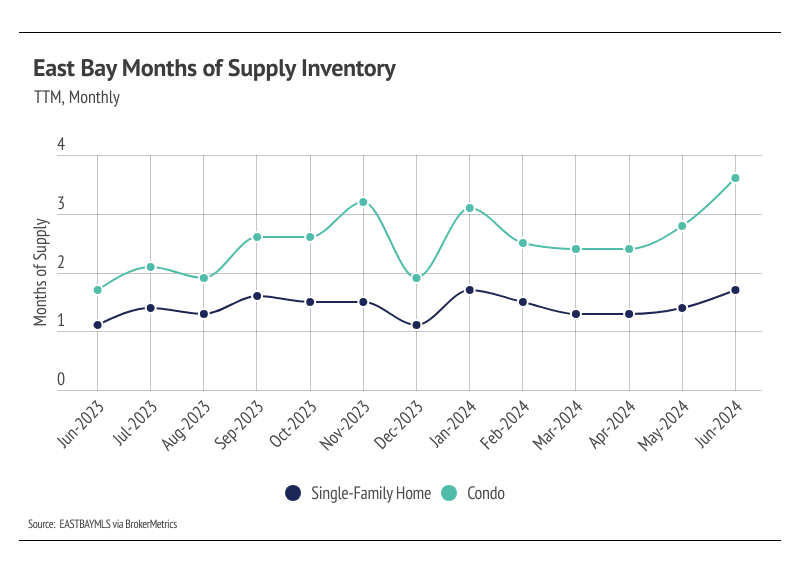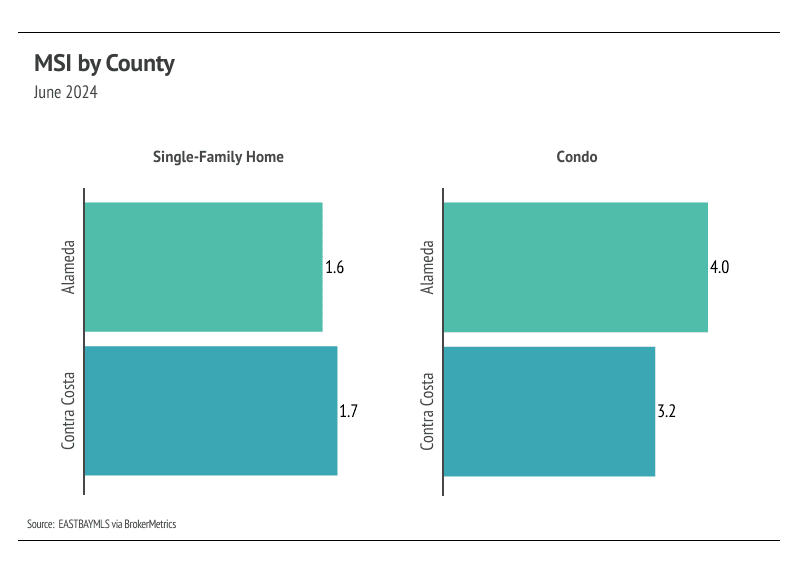-
Median home prices are slightly below peak levels across the East Bay. We expect prices across most of the East Bay to continue rising in July, though they will likely remain slightly below the record highs.
-
Active listings rose, but sales and new listings declined in the East Bay month over month. We expect inventory to increase into July and August and return to a more normal market after the slowdown experienced over the past year and a half.
-
Months of Supply Inventory still indicates a sellers’ market in the East Bay for single-family homes, but for condos, MSI shows a shift from favoring sellers to buyers.
Note: You can find the charts/graphs for the Local Lowdown at the end of this section.
_____________________________________________________________________________________________
Median prices declined month over month in the East Bay except for Contra Costa condos
In the East Bay, low inventory and high demand have more than offset the downward price pressure from higher mortgage rates, and prices generally haven’t experienced larger drops due to higher mortgage rates. Month over month, in June, the median single-family home price fell 2% in Alameda and 3% in Contra Costa. Year over year, prices were up 4% in Alameda and down 2% in Contra Costa. Condo prices fell in Alameda but rose in Contra Costa from May to June. We expect prices in the East Bay to remain slightly below peak this year, although new highs are possible in July 2024. Additionally, inventory is low enough that it will create price support as supply declines in the second half of the year.
High mortgage rates soften both supply and demand, but home buyers and sellers seemed to tolerate rates above 6%. Now that rates are near 7% again, sales are slowing during the time of the year when sales tend to be at their highest. This phenomenon isn’t great for the market, but it isn’t terrible, either, as it may allow inventory to build in a massively undersupplied market.
_____________________________________________________________________________________________
Inventory rose for the sixth month in a row, while sales and new listings declined
Since the start of 2023, single-family home inventory has followed fairly typical seasonal trends, but at significantly depressed levels. Low inventory and fewer new listings have slowed the market considerably. Typically, inventory peaks in July or August and declines through December or January, but the lack of new listings prevented meaningful inventory growth. Last year, new listings and sales peaked in May, while inventory peaked in October. New listings have been exceptionally low, so the little inventory growth in 2023 was driven by softening demand. In December 2023, inventory and sales dropped, but more new listings have come to the market in 2024, which has driven the significant increase in both inventory and sales so far this year. The market looks far healthier than last year, and we expect the market to slow in the coming months — the seasonal norm.
With the current inventory levels, the number of new listings coming to market is a significant predictor of sales. New listings fell 14% month over month, and sales followed suit, declining 12%. Year over year, inventory is up 33%.
_____________________________________________________________________________________________
Months of Supply Inventory rose in June 2024, indicating a shift in favor of buyers
Months of Supply Inventory (MSI) quantifies the supply/demand relationship by measuring how many months it would take for all current homes listed on the market to sell at the current rate of sales. The long-term average MSI is around three months in California, which indicates a balanced market. An MSI lower than three indicates that there are more buyers than sellers on the market (meaning it’s a sellers’ market), while a higher MSI indicates there are more sellers than buyers (meaning it’s a buyers’ market). The East Bay market tends to favor sellers, which is reflected in its low MSI. MSI trended higher in the second half of 2023, moving above three months of supply for condos. From January to April 2024, however, the East Bay MSI fell significantly before rising slightly in May and June. The single-family home market favors sellers still, but the condo market moved from favoring sellers to buyers.
_____________________________________________________________________________________________
Local Lowdown Data
_____________________________________________________________________________________________


